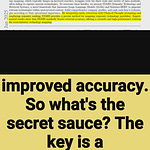Your browser now handles massive documents locally with smart AI chunking
CAG (Chunked Augmented Generation ) enables Chrome's built-in Gemini Nano to process large documents by intelligently chunking content while maintaining semantic coherence, overcoming the 6,144 token context window limitation through browser-optimized processing.
https://arxiv.org/abs/2412.18708
Original Problem 🤔:
→ Chrome's Gemini Nano has a strict 6,144 token context window limit, restricting its ability to process large documents
→ This limitation prevents local AI processing of extensive content within the browser, forcing reliance on external APIs
Key Insights 💡:
→ Sequential processing works better for smaller content (under 24,576 characters)
→ Recursive processing maintains better semantic coherence for larger texts
→ Technical content achieves 75-93% compression ratios
→ Memory utilization stays below 40% even for extensive content
Solution in this Paper 🔧:
→ CAG splits input into optimal chunks based on content type and browser resources
→ Implementation uses RecursiveCharacterTextSplitter for maintaining semantic boundaries
→ Processing happens through sequential or recursive generation based on content size
→ Dynamic memory management keeps browser responsive during processing
Results 📊:
→ Achieves 92.8% success rate for humongous content (>98,304 characters)
→ Maintains sub-2-second latency for small articles
→ ROUGE-N scores reach 0.89 for technical content
→ Peak memory usage stays under 45% of browser resources










